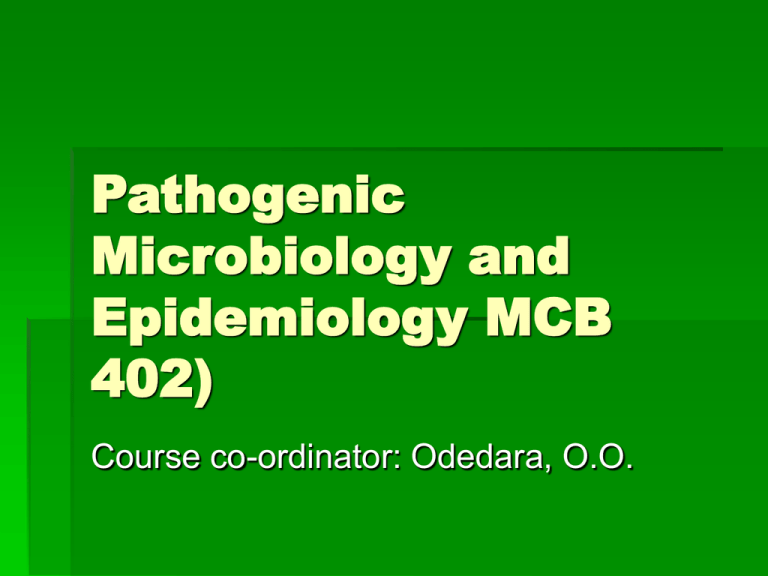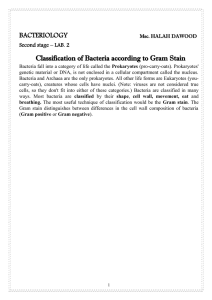Pathogenic Microbiology and Epidemiology MCB 402)
advertisement

Pathogenic Microbiology and Epidemiology MCB 402) Course co-ordinator: Odedara, O.O. *1Department of Microbiology, University of Agriculture, Abeokuta, Nigeria (UNAAB) Bacteria as plant pathogens Bacteria are ubiquitous and physiologically diverse Most bacteria plant pathogens possess common morphological characteristics such as slightly curved rods with rigid cell walls Some have facultative anaerobic metabolism Bacteria plant pathogen could be Gram positive or Gram negative Acidovorax, Agrobacterium and Bulkholderia are examples are examples of Gram negative ones Materials and Methods The few Gram positive pathogens are mainly contained in the genera Curtobacterium and Streptomyces Significant bacteria plant pathogens Gram negative genera (Agrobacterium) -A member of the family Rhizobiaceae -found in the soil and plant roots -some are phytopathogenic -they invade the stem, crown and the root of dicotyledonous plants -Some species cause the transformations of plant cells into tumour cells e.g. Agrobacterium tumefaciens Gram positive genera - Member of the family Streptomycetaceae Produces vegetative hyphae - Widely distributed in soil - E.g Streptomyces ipomoeae which causes scab in sweet potato Transmission of plant bacteria pathogens Dissemination is by: - Water - Wind - Soil movement etc. Other plant pathogens include: - Fungi - Viruses They can be transmitted through similar routes as in bacteria Control of plant pathogens include: - Cultural methods - Sanitary measures - Biological controls - Roguing etc Selected crop diseases of plants Cassava mosaic disease (CMD) - Characterised by formation of irregular yellow patches - Known as mosaic - Caused by African cassava mosaic virus (ACMV) - Transmitted by whiteflies (Bemisia tabaci) - Known to cause about 0-82% crop loss - Had been reported throughout all cassava growing areas of Africa Control of CMD - By: Phytosanitation Vector control Use of resistant cultivar etc.








